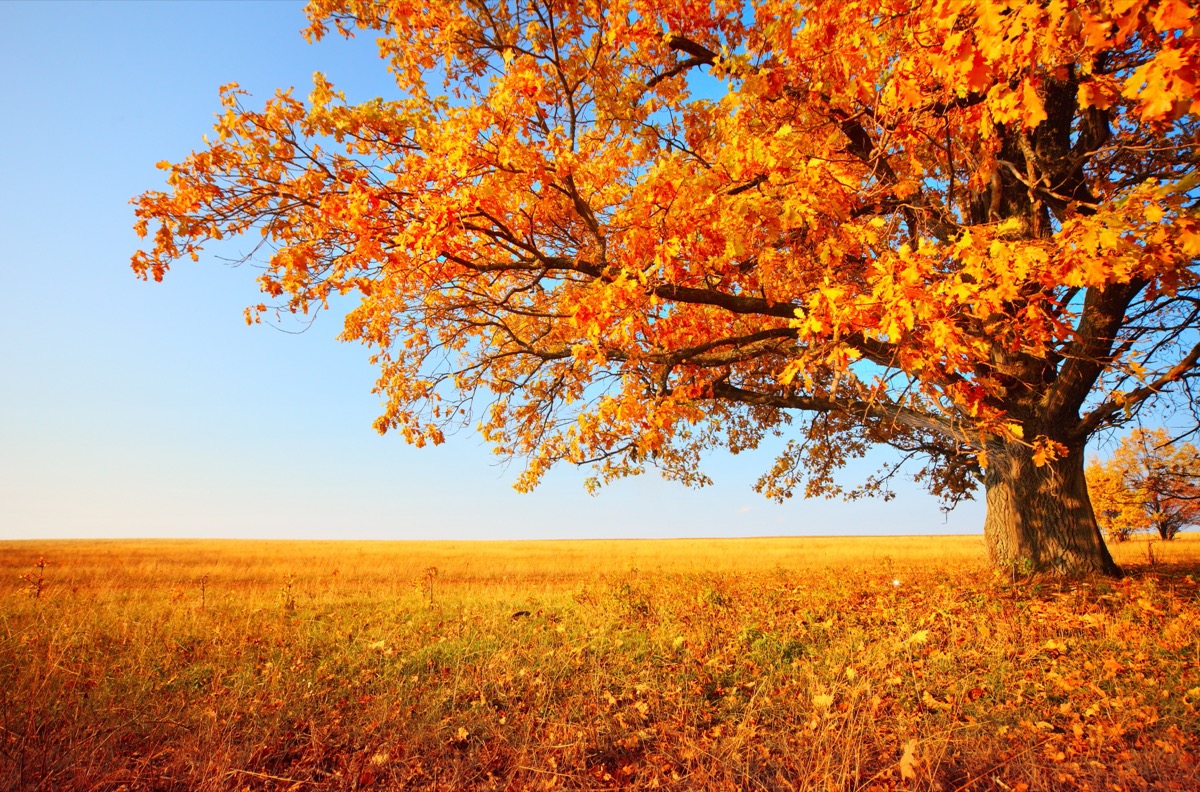If You Live Here, Watch Out for Blister-Causing Bugs Falling from Trees

There are few things more idyllic than taking a summer stroll through a local park or botanical garden, walking under the lush trees as leaves begin to drop, portending the approaching fall. However, residents of one area in the U.S. are returning home from those summer walks covered in more than just a light mist of sweat—they’re coming back covered in bites and blisters, too. Read on to discover what’s causing this sudden problem and what you can do to protect yourself.
RELATED: If You Live Here, Prepare for it to Be “Raining Cockroaches,” Experts Say.
Washington, D.C. has seen a sudden influx of blister-causing “bugs.”

The Washington, D.C. metro area has seen a sudden surge of individuals reporting experiencing painful bites and blisters with no detectable cause.
While The Washingtonian reports that many of the afflicted are comparing their bites to those of the bed bug, experts say they may actually be the work of a microscopic pest.
“We don’t have a definitive diagnosis at this point, but from what we’re seeing, the smart money might be on something called pyemotes, which is a type of oak leaf itch mite,” Kurt Larrick, assistant director of the Arlington County Department of Human Services explained to The Washington Post.
For the latest bug news sent straight to your inbox, sign up for our daily newsletter!
The invasion is likely related to the recent influx of cicadas.

While the mites may seem to have come out of nowhere, experts say there’s a good reason they’re making their presence known now.
“They have been feeding on the cicada eggs up in the trees. When they are out of the trees, they are looking to feed on anything warm, including you,” Ron Ochoa, a USDA research entomologist and mite curator, explained to ABC’s 7News.
Unfortunately, the mites’ small size—approximately one-quarter the size of a pinhead, according to Ochoa—makes it easy for them to travel short distances on the wind and almost impossible to detect until they have bitten you.
There are ways to avoid the microscopic menace.

While trying to avoid a pest you can’t see may seem like an exercise in futility, there are a few ways you can lower your risk of being exposed.
The Illinois Department of Public Health (DPH) explains that keeping your windows closed during their prime season, from August to October; washing your hands; washing your clothing daily after coming inside, especially if you’ve had contact with plants; and not sitting under or near oak trees can help reduce your risk of bites. Fortunately, the DPH says that the mites cannot live inside homes since there is no food source for them there.
The problem should largely resolve in the fall.

The highest concentration of so-called “mite showers” occur between August and October, so the problem will likely resolve within a few months.
Once the leaves have largely fallen from trees, at the very least, the mites will no longer be falling from overhead. Until then, Ochoa recommends, “Number one: use repellent whenever you go outdoors and number two: don’t scratch unless your hands and nails are clean.”
RELATED: If You Live Here, Prepare to See Thousands of Tarantulas, Experts Say.